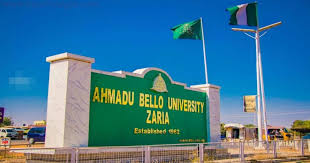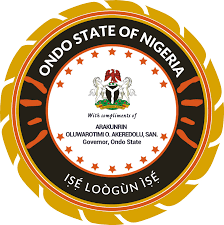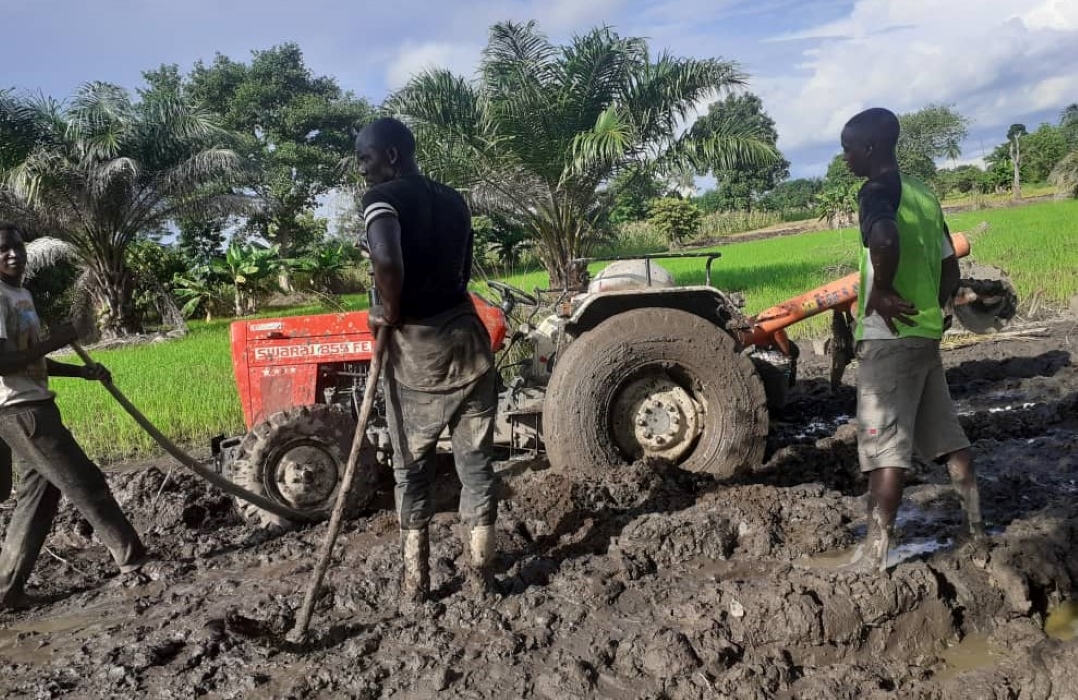Agriculture
The Looming Food Crisis

COVID-19 pandemic has not only brought about health challenges to Nigeria and the rest of the world, but has in its wake visited untold economic and social problems. Prominent among the challenges is the risk of hunger pandemic, which is set to almost double acute hunger in Nigeria and some countries in the world by the end of the year.
The COVID-19 pandemic, according to the recent United Nations World Food Programme[WFP] report could almost double the number of people suffering from acute hunger, pushing the figure to more than a quarter of a billion by the end of the year.
According to the WFP report, the number of people facing acute food insecurity , stands to rise to 265 million in 2020, an increase of 130 million from the 135 million in 2019, as a result of the economic impact of COVID-19. The estimate was announced alongside the release of the Global Report on Food Crises, produced by WFP and 15 other humanitarian and development partners. The report stressed that some 265 million people in low and middle-income countries , in Nigeria and other nations in Africa , will face acute food insecurity by the end of 2020 unless swift action was taken to avert the situation.It is noteworthy that before the advent of COVID-19 pandemic, majority of people that suffered acute food insecurity in 2019 were mainly in countries affected by conflict, which was put at 77 million; while those that suffered as a result of climate change was 34 million, and economic crises victims was put at 24 million according to Global Report on Food Crises. Nigeria incidentally was last year listed among the 10 countries worst affected by food crises. The rest were Yemen, the Democratic Republic of Congo, Afghanistan, Venezuela , Ethiopia, South Sudan, Syria, the Sudan, and Haiti.
WFP further disclosed that on the whole, more than 40 million West Africans face food shortages in the coming months, as the pandemic is worsening , resulting in volatility in the price of food staples and complicating food system triggering food insecurity and malnutrition.
The WFP noted with concern that: “COVID-19 is potentially catastrophic for millions who are already hanging by a thread. It is a hammer blow for millions more who can only eat if they earn a wage. Lockdowns and global economic recession have already decimated their nest eggs. It only takes one more shock, like COVID-19 , to push them over the edge. We must collectively act now to mitigate the impact of this global catastrophe.” The need therefore, to act collectively to avert the impeding food insecurity cannot be overstressed.
The African Development Bank (AFDB), initiative in providing about $10billion to implement strategic roadmap of projects and programmes of immediate and longer term measures to tackle nutrition and food crisis situation in Nigeria and other countries in the continent is coming at the right time. This is part of the measures by the Bank to assist Nigeria and other African countries mitigate impacts of COVID-19 pandemic on the agriculture sector.
The AfDB Feed Africa Response to COVID-19 (FAREC), is part of the bank’s comprehensive intervention to build resilience, sustainability and regional self-sufficiency in Africa’s food systems and help farmers cope with coronavirus-related disruptions to the agricultural value chain.The Bank’s Vice President for Agriculture, Human and Social Development, Dr. Jennifer Blanke, said the Bank’s response was in effort to address the challenges faced by African countries across agriculture value chain, as Africa cannot afford a food crisis in the wake of the COVID-19 pandemic.
A report released alongside the roadmap recommends immediate, short-and medium-term solutions for the agriculture sector including; support of food delivery for the most vulnerable; stabilization of food prices; optimization of food processing; extension support services, and provision of key agricultural inputs through smart subsidies.
According to the report, the Bank will prioritize policy support to enhance movement of inputs and food, to establish food security task forces in countries, and to strengthen the capacity of regional organisations to monitor multi-country initiatives.
“Ensuring food security for Africans in all situations is at the core of the Bank’s Feed Africa Strategy. Our institution will coordinate its efforts with different stakeholders across the continent to effectively answer the needs of regional member countries,” said Dr. Martin Fregene, Director of the Bank’s Agriculture and Agro-industry Department.
Speaking in a similar vein, President Muhammadu Buhari in his Democracy Day broadcast to the nation promised to work towards maintaining his policy on agriculture to ensure food sufficiency for the nation.
According to the Nigerian leader, “we are promoting “Grow What We Eat” and “Eat What We Grow”, adding that the government will continue to support the Agriculture sector through the CBN Anchor Borrowers Programme and similar schemes.”
To protect our farming investments, he said the Federal Government has deployed 5,000 Agro-Rangers and employed 30,289 in our para-military agencies.
This and other initiatives of government are encouraging. Laudable as these appear, the President has great roles to play in ensuring that the Ministry of Agriculture, the Anchor Borrowers’ programme of the Central Bank do the needful to ensure that with the rainy season here, they will work collectively to ensure a bountiful harvest that will guarantee food security for the nation.
They should address the problems of fertilizer and seedlings availability for farmers, especially those in rural areas. Above all, the government has more tasks before it to ensure a greater security, especially in the northern states where farmers and their family members have been victims of kidnapping banditry and other forms of criminality.
Agriculture
Nigeria Misses out on $180bn Global Cassava Processing Market

By Torough David , Abuja
With a current production capacity of 62.69 million and holding the position of the largest producer of cassava in the world, Nigeria is missing out of the $180 billion global cassava processing market.
The country’s cassava value chain, although hampered by local consumption, has the potential to drive economic growth and attract foreign investments.
Stakeholders in the value chain say that with improved yield, provision of credits for farmers and accessibility of lands, the country could tap into the $180 billion processed market.
The conversion of fermented cassava into high-quality products—such as High-Quality Cassava Flour (HQCF), cassava starch, bioethanol, and sweeteners (glucose and sorbitol) — could aid in cushioning forex scarcity in Nigeria.
“Nigeria, as the world’s largest cassava producer, generates approximately 18 percent of global cassava output but captures merely 2 percent of the crop’s vast $180 billion global processing market,” said Olayinka David-West, dean of Lagos Business School, Pan-Atlantic University.
David-West reiterated that despite cassava’s substantial production scale—feeding millions daily through staple foods like Garri and fufu and sustaining the livelihoods of approximately 14 million smallholder farmers—over 90 percent of Nigeria’s cassava harvest remains relegated to low-value and food-grade uses.
“This significantly constrains farmer incomes and limits broader economic impact,” she added.
Escalating global demand for industrial cassava products offers Nigeria a significant market opportunity to expand beyond traditional uses, she says.
According to the International Trade Centre, global cassava derivative exports have grown over 20 percent annually in recent years, underscoring robust international demand for industrial cassava products.
Meanwhile, Olayinka Majekodunmi, partner at Boston Consulting Group, emphasised that cassava in its HQCF form serves as a strategic alternative to imported wheat flour, essential for Nigeria’s bakery and snack sectors.
This is imperative as Nigeria imports 98 percent of its wheat needs, amounting to an average of $2 billion annually.
“HQCF presents substantial import substitution potential, potentially unlocking a $600 million market. Currently, utilisation remains low at 5 percent, yet scaling to 20 percent is achievable, given existing facilities are underutilised by approximately 50 percent,” he said.
On the investment opportunities in cassava starch, he explained that it is commonly used in paper, textile and pharmaceutical industries.
“Domestic production significantly lags demand, which grows at approximately 5.2 percent annually, representing a substantial market gap. Capturing this gap could realistically secure an additional $485 million, bolstering local manufacturing capabilities.”
But to conveniently tap into this pool of wealth, stakeholders argue that production must first of all be ramped up.
How production can be bolstered
Although current cassava yields average 6 tons per hectare compared to a global benchmark of 25 tons per hectare. The Food and Agriculture Organisation (FAO) estimates that bridging this yield gap could boost production by an additional 11 million metric tons.
“Key investments are needed in superior, disease-resistant varieties, mechanization, agronomic training, and post-harvest handling improvements to reduce losses,” David-West said.
She said cassava processing costs in Nigeria remain high, often quadrupling in off-grid areas due to unreliable power supply.
Hence, most processing facilities operate 50 percent below capacity, further lowering efficiency.
According to her, this calls for strategic investments in modern processing technologies, renewable energy infrastructure, and agro-industrial clusters.
Echoing her words, Majekodunmi said access to affordable finance remains a major challenge. He urged the development of tailored financial instruments such as patient capital and concessional loans, coupled with securing long-term off-take agreements, which will mitigate risks.
Stakeholders believe that the country has what it takes to drive value addition in the sector, but it requires intentional efforts to bolster yield per hectare and production capacity.
Key industrial derivatives
Among cassava derivatives, four key products present immediate high-growth opportunities, collectively representing a market of approximately $2 billion:
High-Quality Cassava Flour
HQCF serves as a strategic alternative to imported wheat flour, essential for Nigeria’s bakery and snack sectors.
With Nigeria importing roughly 98 percent of its wheat consumption—valued at approximately $2 billion annually—HQCF presents substantial import substitution potential, potentially unlocking a $600 million market.
Currently, utilization remains low at 5 percent, yet scaling to 20 percent is achievable, given existing facilities are underutilized by approximately 50 percent.
Industrial starch: Widely used in sectors such as paper, textiles, pharmaceuticals, adhesives, and food additives, local cassava starch offers significant competitive advantages.
Domestic production significantly lags demand, which grows at approximately 5.2 percent annually, representing a substantial market gap.
Capturing this gap could realistically secure an additional $485 million, bolstering local manufacturing capabilities.
Sweeteners (Glucose and Sorbitol)
Nigeria’s rapidly growing sweetener market (18 percent annual growth) remains predominantly import-dependent (95 percent imported), driving up costs for manufacturers.
Cassava-based sweeteners offer a cost-effective alternative, priced considerably lower than imported sucrose.
Companies such as Coca-Cola have indicated strong interest in sourcing locally, underscoring this segment’s immediate scalability and representing a clear $500 million market opportunity.
Bioethanol
Nigeria imports about 26 percent of its ethanol for beverages, pharmaceuticals, and fuel blending, exposing the economy to price volatility.
Cassava-based bioethanol offers significant economic advantages, costing approximately $0.06 per liter less than imported ethanol.
Given Nigeria’s existing ethanol market valued at $420 million, substantial expansion opportunities exist for investors to scale local production.
Agriculture
Don Pushes for Sustainable Environmental Practices

A lecturer at Ahmadu Bello University (ABU), Zaria, Prof. Wisdom Japhet has called on Nigerians to adopt practices that protect the environment and promote sustainable development.
Japhet made the call on Tuesday in Abuja on the sidelines of a training workshop on environmental standards.
The workshop was organized by the Sustainable Procurement Environmental and Social Standards Enhancement Centre of Excellence (SPESSECE ABU), in collaboration with the World Bank.
Japhet, who also serves as the Director of SPESSECE ABU, emphasised the importance of environmental awareness in developmental planning.
He said the goal of the training was to instill in participants the knowledge and capacity to integrate environmental considerations into development projects.
“The aim is to build capacity in the area of sustainable development.
“Every developmental activity must be sustainable. We are training participants to consider environmental impacts and provide consultancy for projects that may have negative consequences on the environment,” he said.
He added that certification in environmental management was becoming increasingly essential, as global standards now prioritise it.
“It’s very important for Nigerians to be both environmentally and socially aware. When you harm the environment, you harm people by extension,” Japhet stated.
He called on stakeholders in both public and private sectors to participate in the SPESSECE training and become certified.
According to him, the programme also equips participants with tools to anticipate environmental issues in projects, including planning for mitigation strategies.
“Most developmental activities have some environmental impact, and if those are not addressed, they cannot be considered sustainable. We must develop, but not at the expense of the environment,” he said.
On the issue of noise pollution, Japhet noted that everyone had a role to play in protecting the environment.
Also speaking, Dr Soala Martyns-Yellowe, an environmental practitioner, said that the SPESSECE project aimed to improve Nigeria’s capacity to manage environmental, social, and procurement standards.
He said the initiative was crucial as Nigeria strived to meet its development goals.
“The idea is to mainstream environmental and social frameworks into national systems,” he said.
Martyns-Yellowe urged relevant agencies to intensify awareness campaigns about the dangers of noise pollution and enforce existing regulations to mitigate its effects.
| ReplyReply allForwardAdd reaction |
Agriculture
Ondo to Partner FUTA on Wildlife Conservation

The Ondo State Government said it will partner with the Federal University of Technology, Akure (FUTA), on the restoration and development of OSSE River Park to international standards for eco-tourists attraction.
Permanent Secretary, Ministry of Agriculture and Forestry, Segun Odusanya stated this during a meeting with the Department of Forestry and Wood Technology and Department of Ecotourism and Wildlife Management of the institution.
Odusanya, who said that there was a need to partner national and international organisations, explained that the state government welcomed technical and logistic support to enhance the park’s restoration and conservation.
“The OSSE River Park is the state’s only conservation park which provides a habitat for wild animals, but it requires attention due to human activities,” he said.
Also, Mr Olushola Ibosiola, Director of Wildlife Conservation, Parks, and Ecotourism in the ministry, emphasised the importance of wildlife conservation and ecotourism, saying that the park covered 285.79 km²
According to him, the benefits of ecotourism include revenue generation, economic incentives, awareness, and research support.
Ibosiola, however, acknowledged the challenges of ensuring sustainable practices and balancing economic benefits with conservation goals.
Prof. Oluseyi Fabiyi and Prof. Adekunle Ogunjinmi, from the two departments in FUTA, expressed their willingness to collaborate with the government to harness the park’s potential.
The duo said the international bodies were willing to provide support for wildlife conservation and ecotourism development.
They promised to schedule a visit to assess the park’s condition and determine the level of intervention required.





























